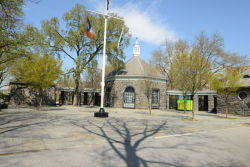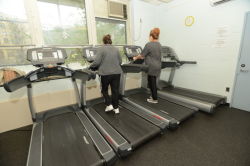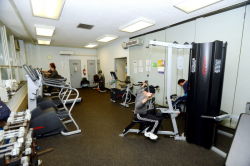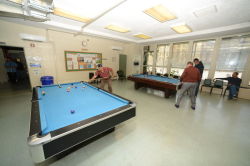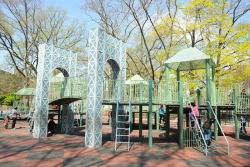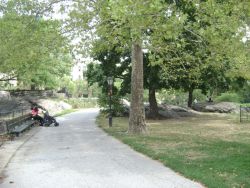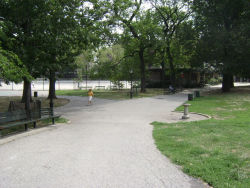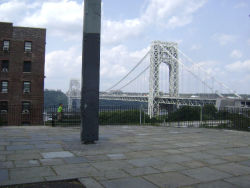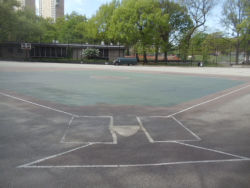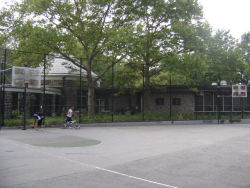J. Hood Wright Park
Parks Restores Historic Cupola At J. Hood Wright Recreation Center
Thursday, March 7, 2013
No. 13
http://www.nyc.gov/parks
The New York City Department of Parks & Recreation has restored the historic cupola of the J. Hood Wright Recreation Center. The cupola, a prominent feature of the original building dating back to its construction in 1936, was restored to its original condition. This work was generously funded through a capital budget allocation by Borough President Scott Stringer.
This restoration is part of a larger capital project funded by the City Council that involves upgrading the boiler and hot water heating system of the center with gas-fired units. A new boiler and air conditioning system has been installed. The entire project should be completed this month. There’s no better time to join a Parks’ recreation center. Joining gives New Yorkers access to a network of facilities in all five boroughs, including indoor pools, running tracks and fitness rooms, for just 41 cents a day for adults. J. Hood Wright Recreation Center offers recreation, fitness, educational and cultural programs to youths, adults and seniors year round.
Located between 173rd and 176th Streets, from Fort Washington Avenue to Haven Avenue, J. Hood Wright Park is named for the former owner of the site. Wright (1836-1894), a wealthy banker and financier from Philadelphia, lived in a mansion at 175th Street and Haven Avenue. He made large anonymous contributions to what is now the Washington Heights Branch of the New York Public Library. A plaque at the branch entrance honors Wright for his role in changing the status of the library from a subscription library to a free library in 1883. He also was instrumental in the founding of a hospital in New York’s Manhattanville neighborhood.
The park has handball, volleyball, and basketball courts, a multi-purpose playing field, and a dog-walking area. Vistas of the Hudson River and of the George Washington Bridge beckon visitors to the overlook at the northwest corner of the park. Additionally, the overlook features 3000 A.D. Diffusion Piece, a sculpture by Terry Fugate-Wilcox installed in 1974. Made of magnesium and aluminum plates bolted together, the artwork is expected to diffuse, or mix, by the year 3000. Other notable park aspects are the rock formations at Haven Avenue that include a cave similar to the rock shelters at Inwood Hill Park, and an outcropping of Manhattan schist at the park’s southwest corner.
Check out your park's Vital Signs
Clean & Safe
Green & Resilient
Empowered & Engaged Users
Share your feedback or learn more about how this park is part of a
Vital Park System

